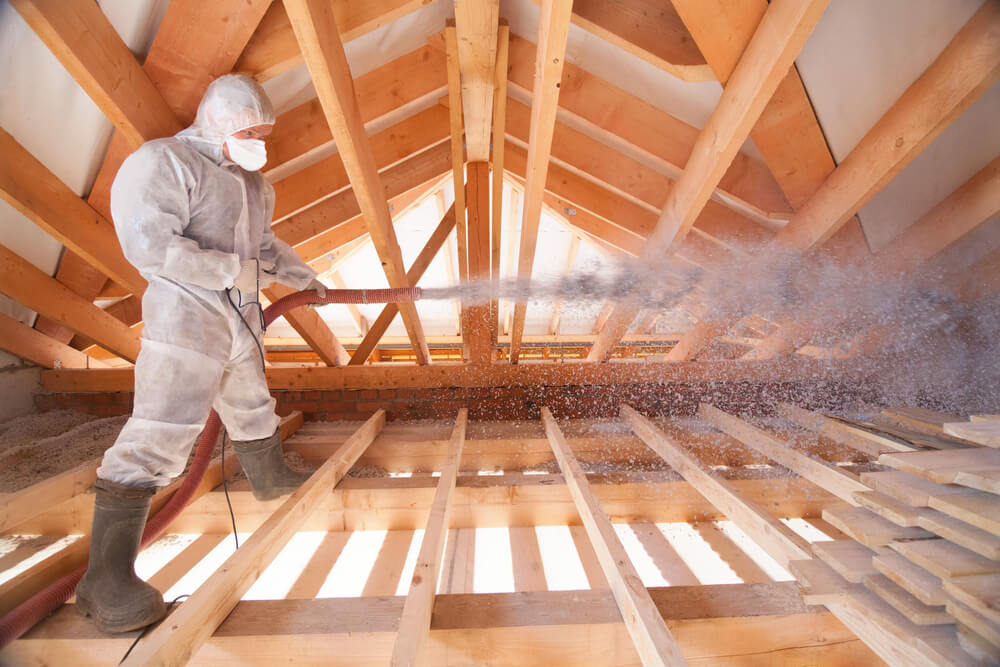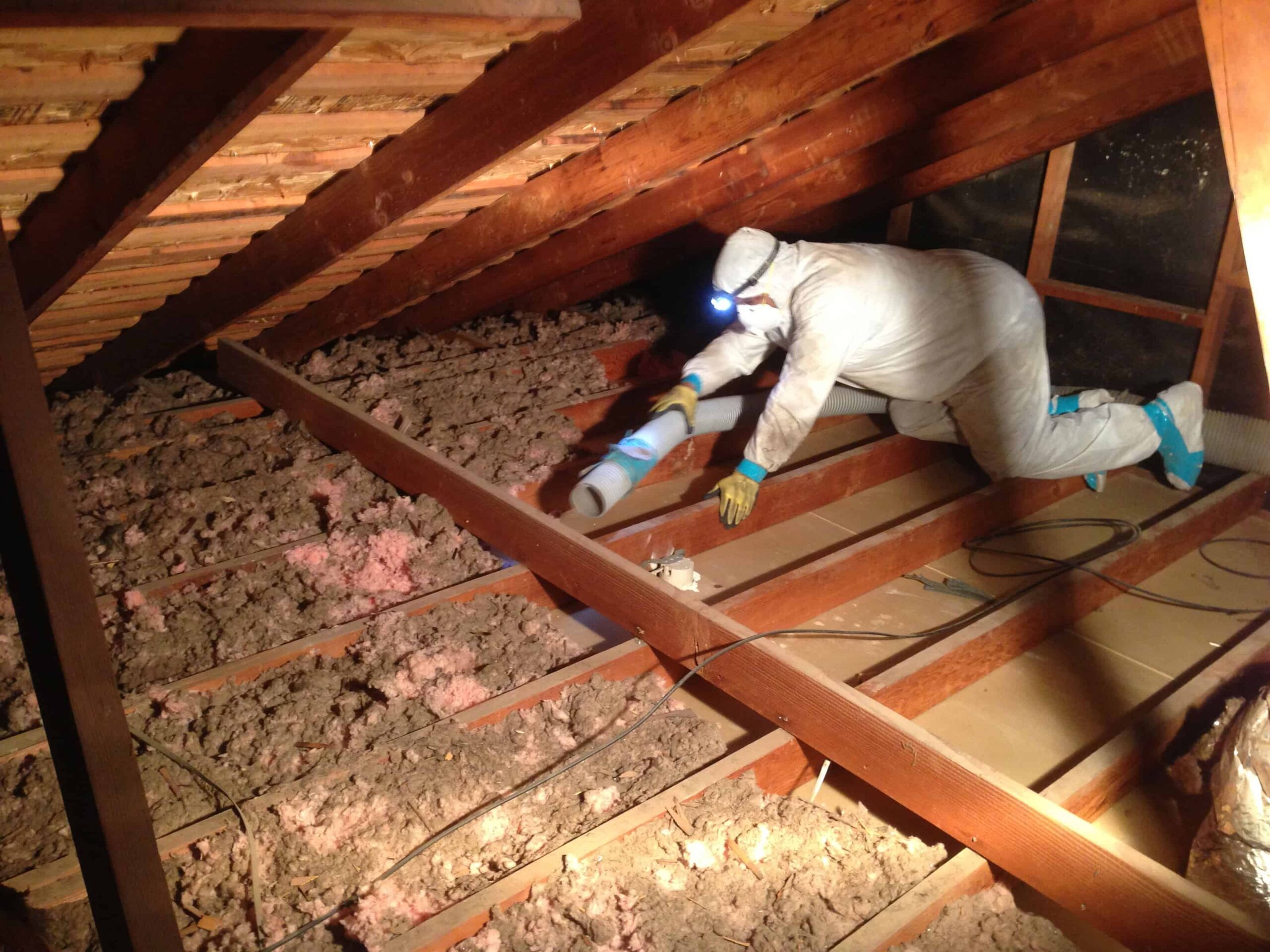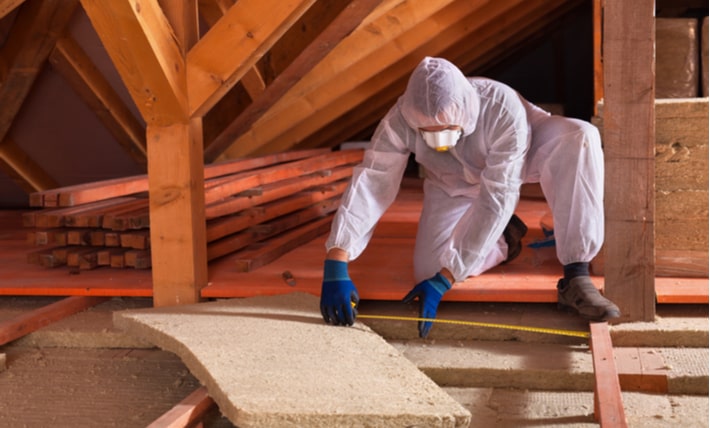Introduction to Vermiculite Insulation and Asbestos
Vermiculite insulation, a once-favored choice in both residential and commercial construction, has emerged as a topic of significant health and safety concern in recent years. This concern primarily stems from the potential presence of asbestos fibers in vermiculite insulation materials. Asbestos, a known health hazard, can lead to severe respiratory diseases and cancers, making it imperative to understand the relationship between vermiculite insulation and asbestos. This article aims to shed light on the nature of vermiculite insulation, explore its historical use, and elucidate the risks associated with asbestos contamination. Furthermore, we will discuss the critical role of professional testing in identifying asbestos in vermiculite insulation and outline the best practices for safe and effective vermiculite insulation removal.
Vermiculite Insulation: Composition and Historical Use
The Origin and Nature of Vermiculite Insulation
Vermiculite, a silicate material derived from mined minerals, undergoes significant expansion when heated—a property that led to its widespread use in various applications. The history of vermiculite insulation dates back to the early 20th century, with its popularity peaking in the mid-1900s due to its excellent insulation properties. Vermiculite’s composition includes layers of thin plates that expand when exposed to high temperatures, resulting in a lightweight, fire-resistant, and efficient insulating material. This unique composition made it an ideal choice for insulating homes, particularly in attics and walls, providing both thermal insulation and fire resistance.
Vermiculite Insulation in Residential and Commercial Buildings
The versatility of vermiculite insulation extended beyond residential uses. It was commonly utilized in commercial buildings for its insulating properties, which significantly improved energy efficiency. The material was also popular in soundproofing applications, contributing to a quieter and more comfortable indoor environment. Additionally, vermiculite was frequently mixed with concrete and other materials to enhance their structural properties, offering not only insulation but also increasing the overall durability of building materials.
The Asbestos Risk in Vermiculite Insulation
Vermiculite and Asbestos: The Connection
The connection between vermiculite insulation and asbestos contamination primarily originates from specific vermiculite mines, most notably the Libby Mine in Montana. This mine, responsible for a significant portion of the world’s vermiculite production until its closure in 1990, was found to have a natural deposit of asbestos, leading to contamination of the mined vermiculite. Asbestos fibers, when inhaled, pose serious health risks. As a result, vermiculite products from mines like Libby have been under scrutiny for potentially containing harmful asbestos fibers. It is essential to understand that not all vermiculite contains asbestos; however, due to the high output from the Libby Mine, a considerable amount of vermiculite used in construction during the 20th century is likely to be contaminated.
Health Implications of Asbestos in Vermiculite Insulation
Exposure to asbestos fibers, particularly over prolonged periods, is linked to several severe health conditions. The most common diseases associated with asbestos exposure include asbestosis, a chronic lung disease resulting in severe fibrosis; lung cancer; and mesothelioma, a rare form of cancer typically affecting the lining of the lungs. These conditions develop over time and can be life-threatening. Asbestos fibers are microscopic and can easily become airborne, especially during renovation or demolition activities involving vermiculite insulation. Once airborne, these fibers can be inhaled, leading to significant health risks. The latency period between exposure and the onset of disease can be several decades, making it a silent but persistent health threat .
Professional Vermiculite Removal: Safety and Compliance
Identifying Vermiculite Insulation in Your Home
Identifying vermiculite insulation in a building is the first step towards addressing potential asbestos risks. Vermiculite insulation is typically found in attics, wall cavities, and around pipes, and is recognizable by its small, pebble-like appearance, with a color palette that ranges from gray-brown to silver-gold. However, the mere visual identification of vermiculite insulation is insufficient to determine the presence of asbestos. Some vermiculite insulations might look harmless but could potentially contain hazardous asbestos fibers.
Why Professional Testing is Crucial
Given the health risks associated with asbestos, professional testing of vermiculite insulation is not just recommended; it is crucial. This testing is conducted by certified professionals who collect samples of the insulation material and analyze them in a specialized laboratory. The analysis typically involves advanced microscopic techniques, such as polarized light microscopy or transmission electron microscopy, which can accurately detect the presence of asbestos fibers in the samples. The results of these tests are critical in determining the next steps for homeowners and building managers, whether it means safe continued use, encapsulation, or removal.
The Process of Safe Vermiculite Insulation Removal
The removal of vermiculite insulation, especially when it contains asbestos, is a complex and hazardous process that must be performed by trained and certified professionals. The process typically involves several key steps:
- Preparation and Safety Measures: The area containing the vermiculite insulation is isolated to prevent the spread of asbestos fibers. This often involves sealing the space and using negative air pressure systems to contain the fibers.
- Careful Removal: Professionals wearing protective gear carefully remove the vermiculite insulation, ensuring minimal disturbance to prevent airborne asbestos fibers.
- Proper Disposal: The removed material is then safely packaged in sealed containers and transported to designated disposal facilities that can handle asbestos waste according to legal and environmental regulations.
The removal process must adhere to strict safety protocols to protect not only the workers performing the removal but also the building’s occupants and the environment.
Legal Considerations in Vermiculite Removal
The handling and disposal of asbestos-contaminated materials are governed by stringent laws and regulations to protect public health and the environment. Non-compliance can result in severe legal and financial consequences, aside from the obvious health risks. Property owners are responsible for ensuring that any asbestos-containing materials in their buildings are managed or removed in compliance with these regulations. Failure to do so can lead to significant legal liabilities and health risks for occupants and workers.
Conclusion and Professional Assistance
The potential presence of asbestos in vermiculite insulation is a serious concern that warrants attention and action. Homeowners, building managers, and construction professionals must understand the risks associated with asbestos-contaminated vermiculite and the importance of professional testing and safe removal. Addressing this issue proactively is essential for ensuring the health and safety of building occupants and workers. By staying informed, taking the necessary precautions, and following legal and safety protocols, the risks associated with asbestos-contaminated vermiculite insulation can be effectively managed and mitigated.
For those seeking professional assistance in asbestos removal, it is important to choose a reputable and experienced service provider. An example of such a provider is BC Green Demolition, an asbestos removal company with expertise in handling and safely removing hazardous materials like asbestos. Their team of trained professionals ensures compliance with all safety and legal standards, providing peace of mind and a secure environment for their clients.



